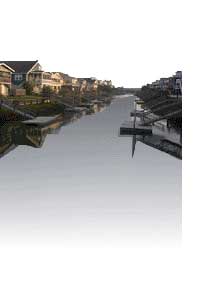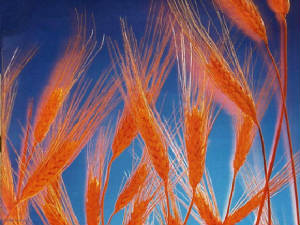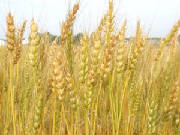 |
 |
 |
 |
|
San Fernando Valley, California
|
 |
|
Agriculture, Gathering and Extractive Industries
|
 |
|
|
|

San Fernando Valley --- Wheat Empire & Peach Country
In the 1880s and '90s,
more towns opened and joined San Fernando on the map. Burbank, Glendale, Pacoima, Calabasas and Chatsworth Park opened. Some
names didn't last: Dundee, Monte Vista, and Oat Hills. The town of Toluca, later renamed Lankershim and then North Hollywood,
came to life on the eastern reach of the original Isaac Lankershim wheat empire. Blessed with deep loam and abundant ground
water, the area was great for peach growing and prospered.
The Valley began to attract more settlers. An Italian immigrant, C.J. Rinaldi, cultivated
orange groves west of San Fernando, which grew large enough that the town built itself a high school. The Southern Pacific
added a second railroad diagonally across the Valley floor from Burbank to Chatsworth that became the coastal route up California.
Automobiles showed up in 1898.
By the start of the 20th century, the Valley was still scantly populated: fewer than
3,000 people on a plain of more than 200 square miles. That would soon change.
|
|
|
Watering the plain
Nothing altered
the Valley's future like the opening on Nov. 5, 1913 of an aqueduct between the Eastern Sierra's Owens Valley and a reservoir
west of San Fernando. The waterway designed by William Mulholland transformed a parched region into an irrigated greenbelt.
Mainly, it ensured Los Angeles a steady water supply. To partake of the bounty most of the towns in the Valley voted in 1915
to join the city of Los Angeles. The vote for annexation was a lopsided 681-25.
The water not only let towns flourish — and made a success of
the subdividers like Chandler whose land exploded in value — it let a thousand farms bloom. Instead of wheat and cattle
that depended on the vagaries of the weather, the Valley began to grow beets and lima beans, lemons and walnuts, grapes and
tomatoes.
The Valley's image changed as the landscape turned lush and verdant. It became a lure and by 1920 had swelled
to 21,000 residents.

San Fernando Valley has come a long way since the
beginning of the 20th century when its fertile ground not only nourished the development of California's citrus industry,
but also the state's fledgling movie and aviation industries.
Today, the San Fernando Valley has grown into the
world's center for entertainment and major supplier for aerospace and defense-related technologies, financial services, health
care and high-tech manufacturing.
|
 |
|
|
|
 |
|

For much of the
19th century the valley was used for livestock and wheat production. With the coming of the railroad in 1874, land prices
began to increase, and real estate development began in earnest in the 1880s. When water was brought in by pipeline from the
Sierra Nevada in 1913, the valley's pastoral setting began to give way to a more urban and suburban environment, spawning
the cities of Burbank, Glendale, and San Fernando, and the unincorporated neighborhoods of Encino, Tarzana, Northridge, Chatsworth,
and Sherman Oaks. In 1915, the city of Los Angeles annexed the entire San Fernando Valley, with the exception of Burbank,
Glendale, and San Fernando.
|
 |
|
|
|
|
|
